For me, Washington D.C. is all about the buildings. In my world of keywording, buildings also include monuments, bridges, and memorials. Steeped in history, full of stories, iconic, architecture, and design all catch my eye. I couldn’t get enough. Here they are, in no particular order.
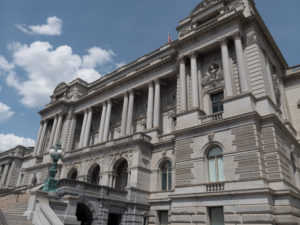 The Library of Congress was NOT what I pictured it to be. From what we saw it was much more a museum than a library. Apparently, it is the official research library that serves the United States Congress and is the de facto national library of the United States. It is the oldest federal cultural institution in the country and is one of the largest libraries in the world. Its collections are universal, not limited by subject, format, or national boundary, and include research materials from all parts of the world and in more than 470 languages. Who knew?
The Library of Congress was NOT what I pictured it to be. From what we saw it was much more a museum than a library. Apparently, it is the official research library that serves the United States Congress and is the de facto national library of the United States. It is the oldest federal cultural institution in the country and is one of the largest libraries in the world. Its collections are universal, not limited by subject, format, or national boundary, and include research materials from all parts of the world and in more than 470 languages. Who knew?
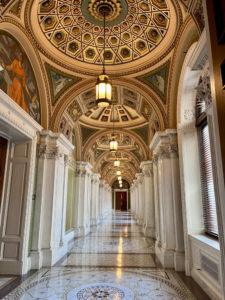
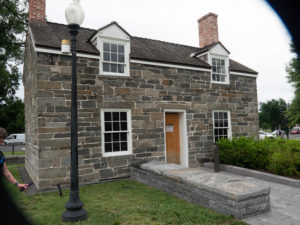 We stumbled across this building on our way to a March for our Lives rally. Excluding the White House, the Lockkeeper’s House is the oldest building on the National Mall, built in 1837.
We stumbled across this building on our way to a March for our Lives rally. Excluding the White House, the Lockkeeper’s House is the oldest building on the National Mall, built in 1837.
The building dates to a period when this area was a wharf and was the location of a section of the Washington City Canal, which connected the Potomac and Anacostia rivers. Here, an eastward extension of the Chesapeake and Ohio Canal met the Potomac River and the Washington City Canal at a canal lock.
The 350-square-foot house served the canal lock keeper, who collected tolls, recorded commerce, maintained the canal, and managed traffic.
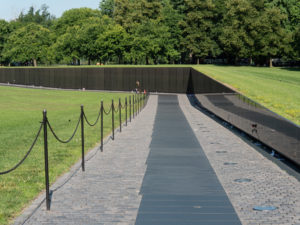 The Vietnam Memorial was powerful. The names on the Wall, originally numbering 57,939 when it was dedicated in 1982, are listed in the chronological order of the casualty dates. It’s interesting how short the wall is from the early days of the war and startling how tall it gets in the middle. Additional names have since been added and as of May 2018, there were 58,320 names. The number of names on the wall is different from the official number of U.S. Vietnam War deaths, which is 58,220 as of May 2018.
The Vietnam Memorial was powerful. The names on the Wall, originally numbering 57,939 when it was dedicated in 1982, are listed in the chronological order of the casualty dates. It’s interesting how short the wall is from the early days of the war and startling how tall it gets in the middle. Additional names have since been added and as of May 2018, there were 58,320 names. The number of names on the wall is different from the official number of U.S. Vietnam War deaths, which is 58,220 as of May 2018.
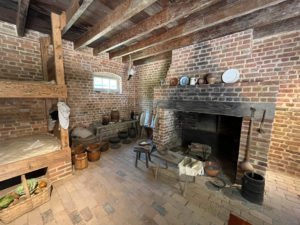
Mount Vernon was a beautiful way to spend an afternoon. The main building was under renovation so we wandered the grounds. It became less beautiful as we entered the slave quarters and realized how many people were owned to make these grounds a working farm back in the day. The above image is a room of the restored slave quarters.
The plantation is on the banks of the Potomac River in Fairfax County, Virginia, just south of Washington, D.C.
The Washington family acquired land in the area in 1674. Around 1734, the family embarked on an expansion of its estate that continued under George Washington, who began leasing the estate in 1754 before becoming its sole owner in 1761.
In 1858, the house’s historical importance was recognized and it was saved from ruin by the Mount Vernon Ladies Association; this philanthropic organization acquired it together with part of the Washington property estate. Escaping the damage suffered by many plantation houses during the American Civil War, Mount Vernon was restored.
Mount Vernon was designated a National Historic Landmark in 1960 and is listed on the National Register of Historic Places. It is still owned and maintained in trust by the Mount Vernon Ladies Association and is open every day of the year. Allowing the public to see the estate is not an innovation, but part of an over 200-year-old tradition started by George Washington himself. In 1794 he wrote: “I have no objection to any sober or orderly person’s gratifying their curiosity in viewing the buildings, Gardens, &ca. about Mount Vernon.”
This is an image of the lower floor of a round barn found on the property. It was invented to have hay laid out on the above floor, have horses walk on it, and ground it up to have it fall through to the bottom floor and be swept up and used. It was cutting-edge technology back then.
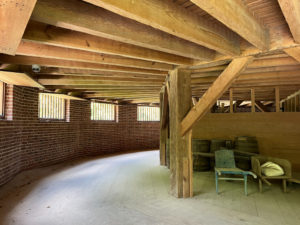
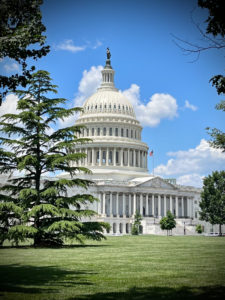 The Capital is located on Capitol Hill at the eastern end of the National Mall. Though no longer at the geographic center of the federal district, the Capitol forms the origin point for the district’s street-numbering system and the district’s four quadrants.
The Capital is located on Capitol Hill at the eastern end of the National Mall. Though no longer at the geographic center of the federal district, the Capitol forms the origin point for the district’s street-numbering system and the district’s four quadrants.
Central sections of the present building were completed in 1800. These were partly destroyed in the 1814 burning of Washington, then were fully restored within five years. The building was later enlarged by extending the wings for the chambers for the bicameral legislature, the House of Representatives in the south wing, and the Senate in the north wing. The massive dome was completed around 1866 just after the American Civil War.
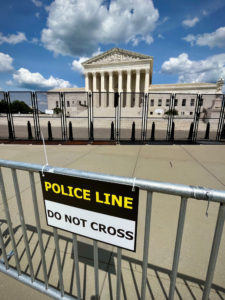 The Supreme Court Building also referred to as “The Marble Palace,” serves as the official workplace of the Chief Justice of the United States and the eight Associate Justices of the Supreme Court. It is located in the block immediately east of the United States Capitol and north of the Library of Congress. On May 4, 1987, the Supreme Court Building was designated a National Historic Landmark.
The Supreme Court Building also referred to as “The Marble Palace,” serves as the official workplace of the Chief Justice of the United States and the eight Associate Justices of the Supreme Court. It is located in the block immediately east of the United States Capitol and north of the Library of Congress. On May 4, 1987, the Supreme Court Building was designated a National Historic Landmark.
The proposal for a separate building for the Supreme Court was suggested in 1912 by President William Howard Taft, who became Chief Justice in 1921. In 1929, Taft successfully argued for the creation of the new building but did not live to see it built. Physical construction began in 1932 and was officially completed in 1935 under the guidance of Chief Justice Charles Evans Hughes, Taft’s successor.
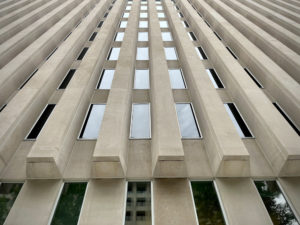 I don’t remember what this building is but we got out of the car, I looked up and saw this…so I SHOT it.
I don’t remember what this building is but we got out of the car, I looked up and saw this…so I SHOT it.
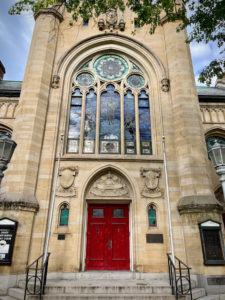
Beautiful architecture was everywhere, be it churches, office buildings, or homes, it was everywhere.
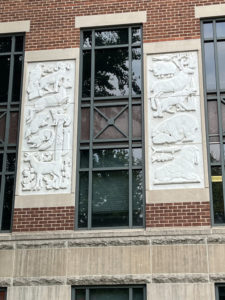
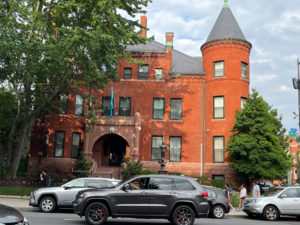 Walking from one place to another, outside of the National Mall, we would come across random buildings like the Embassy of Kazakstan.
Walking from one place to another, outside of the National Mall, we would come across random buildings like the Embassy of Kazakstan.
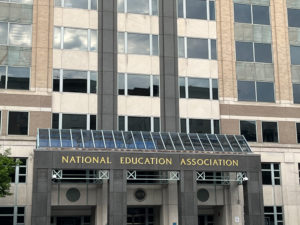 The National Education Association.
The National Education Association.
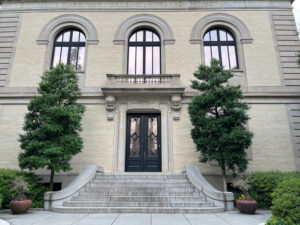 The National Geographic Society.
The National Geographic Society.
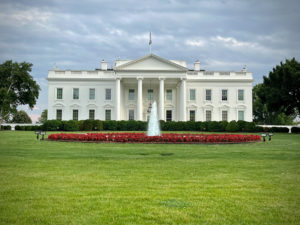 An iPhone picture of the White House. Some days you could get right up to the gate and some days not. Today was a good day.
An iPhone picture of the White House. Some days you could get right up to the gate and some days not. Today was a good day.
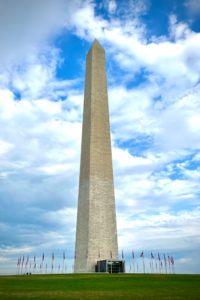 The Washington Monument’s construction began in 1848 and was halted for a period of 23 years, from 1854 to 1877 due to a lack of funds, a struggle for control over the Washington National Monument Society, and the American Civil War. It was built to commemorate George Washington, once commander-in-chief of the Continental Army (1775–1784) in the American Revolutionary War and the first President of the United States (1789–1797). Located almost due east of the Reflecting Pool and the Lincoln Memorial, the monument, made of marble, granite, and bluestone gneiss, is both the world’s tallest predominantly stone structure and the world’s tallest obelisk at 555 feet 5+1⁄8 inches (169.294 m) tall, according to the National Park Service (measured 1884). It is the tallest monumental column in the world if all are measured above their pedestrian entrances. The cornerstone was laid on July 4, 1848; the first stone was laid atop the unfinished stump on August 7, 1880; the capstone was set on December 6, 1884; the completed monument was dedicated on February 21, 1885; and officially opened October 9, 1888.
The Washington Monument’s construction began in 1848 and was halted for a period of 23 years, from 1854 to 1877 due to a lack of funds, a struggle for control over the Washington National Monument Society, and the American Civil War. It was built to commemorate George Washington, once commander-in-chief of the Continental Army (1775–1784) in the American Revolutionary War and the first President of the United States (1789–1797). Located almost due east of the Reflecting Pool and the Lincoln Memorial, the monument, made of marble, granite, and bluestone gneiss, is both the world’s tallest predominantly stone structure and the world’s tallest obelisk at 555 feet 5+1⁄8 inches (169.294 m) tall, according to the National Park Service (measured 1884). It is the tallest monumental column in the world if all are measured above their pedestrian entrances. The cornerstone was laid on July 4, 1848; the first stone was laid atop the unfinished stump on August 7, 1880; the capstone was set on December 6, 1884; the completed monument was dedicated on February 21, 1885; and officially opened October 9, 1888.
We never did secure tickets to go up in it. Next time.
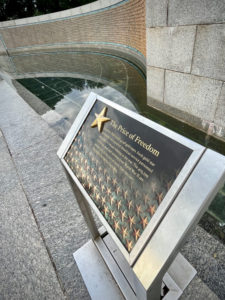 The World War II Memorial was stunning. But this plaque was possibly the most important part of the memorial. It is the Freedom Wall. It explains the price of freedom in very real terms. The wall holds 4,048 gold stars you can see behind the sign to the left. Each star represents one hundred American service personnel who died or remain missing in the war. The 405,399 Americans dead and missing from World War II are second only to the loss of more than 620,000 Americans during our Civil War. And THAT only includes our country. And only service members. Let that sink in for a minute.
The World War II Memorial was stunning. But this plaque was possibly the most important part of the memorial. It is the Freedom Wall. It explains the price of freedom in very real terms. The wall holds 4,048 gold stars you can see behind the sign to the left. Each star represents one hundred American service personnel who died or remain missing in the war. The 405,399 Americans dead and missing from World War II are second only to the loss of more than 620,000 Americans during our Civil War. And THAT only includes our country. And only service members. Let that sink in for a minute.
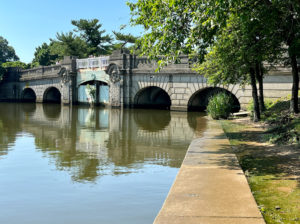
This is a super cute little bridge along the waterway of the Jefferson Memorial whose pillars you can see below.
I found this quote on the Southeast wall to be very pertinent to today’s politics: “I am not an advocate for frequent changes in laws and constitutions, but laws and institutions must go hand in hand with the progress of the human mind. As that becomes more developed, more enlightened, as new discoveries are made, new truths discovered and manners and opinions change, with the change of circumstances, institutions must advance also to keep pace with the times. We might as well require a man to wear still the coat which fitted him when a boy as civilized society to remain ever under the regimen of their barbarous ancestors.” I have more to say but I’ll stop there. 😉
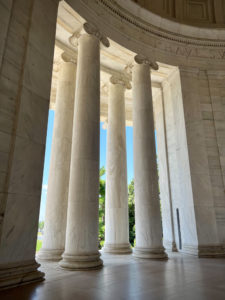
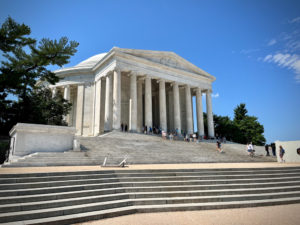
The Lincoln Memorial was dedicated in May 1922. It has always been a major tourist attraction and since the 1930s has sometimes been a symbolic center focused on race relations.
The memorial has been the site of many famous speeches, including Martin Luther King Jr.’s “I Have a Dream” speech delivered on August 28, 1963, during the rally at the end of the March on Washington for Jobs and Freedom.
The memorial is open to the public 24 hours a day, and more than 7 million people visit it annually.
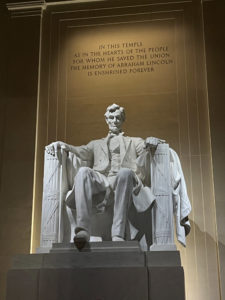
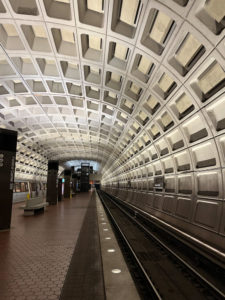 Even the Metro station is kinda cool inside.
Even the Metro station is kinda cool inside.
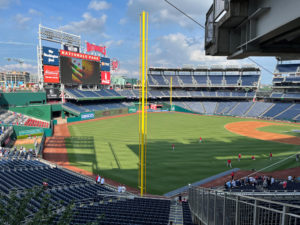 We went to a Washington Nationals Major League Baseball game with our friends. I even ate a hot dog.
We went to a Washington Nationals Major League Baseball game with our friends. I even ate a hot dog.
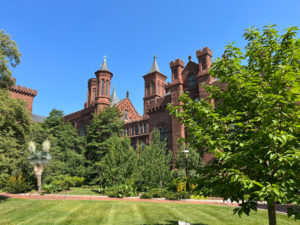 The Smithsonian Institution is legendary. I learned this at an exhibit: “The Smithsonian Institution started with a gift from an 18th-century English scientist named James Smithson who left his fortune to the United States, a country he had never seen. This exhibition looks at the history of the Smithsonian, focusing on its research, museums, and public programs in art, culture, history, and science and the role of the American public in the Smithsonian museums and research.
The Smithsonian Institution is legendary. I learned this at an exhibit: “The Smithsonian Institution started with a gift from an 18th-century English scientist named James Smithson who left his fortune to the United States, a country he had never seen. This exhibition looks at the history of the Smithsonian, focusing on its research, museums, and public programs in art, culture, history, and science and the role of the American public in the Smithsonian museums and research.
The Smithsonian is a partnership between its specialist staff and the American people. ”
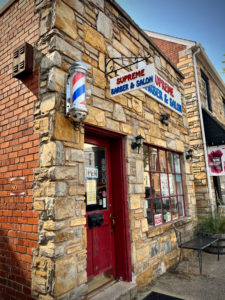
Walking around old Alexandria we ran into some old buildings.
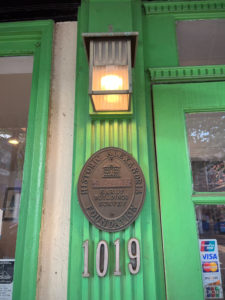
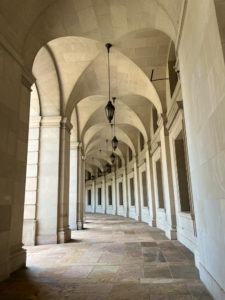 I’m not sure what this building is but we emerged from the underground Metro to this. Stunning.
I’m not sure what this building is but we emerged from the underground Metro to this. Stunning.
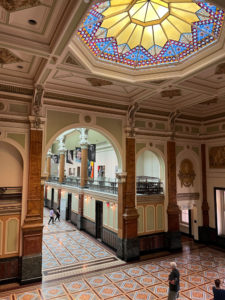 This is the National Portrait Gallery which is full of, you guessed it, portraits! Among other art pieces.
This is the National Portrait Gallery which is full of, you guessed it, portraits! Among other art pieces.
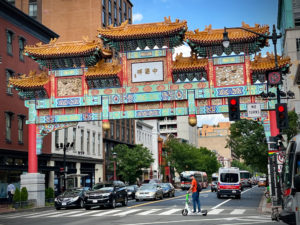 We didn’t go into Chinatown but found one of the entrances to it near the portrait gallery. Again, next time.
We didn’t go into Chinatown but found one of the entrances to it near the portrait gallery. Again, next time.
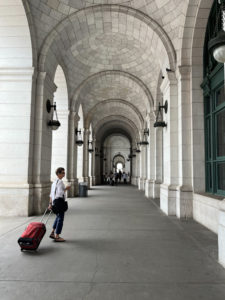 Here’s Ellen at Union Station, on our way to find the Amtrak train that will take us to New York City.
Here’s Ellen at Union Station, on our way to find the Amtrak train that will take us to New York City.
I hope you enjoyed the small sampling of the buildings we encountered on the D.C. portion of our June adventure.
Until next week, Happy Shooting!!
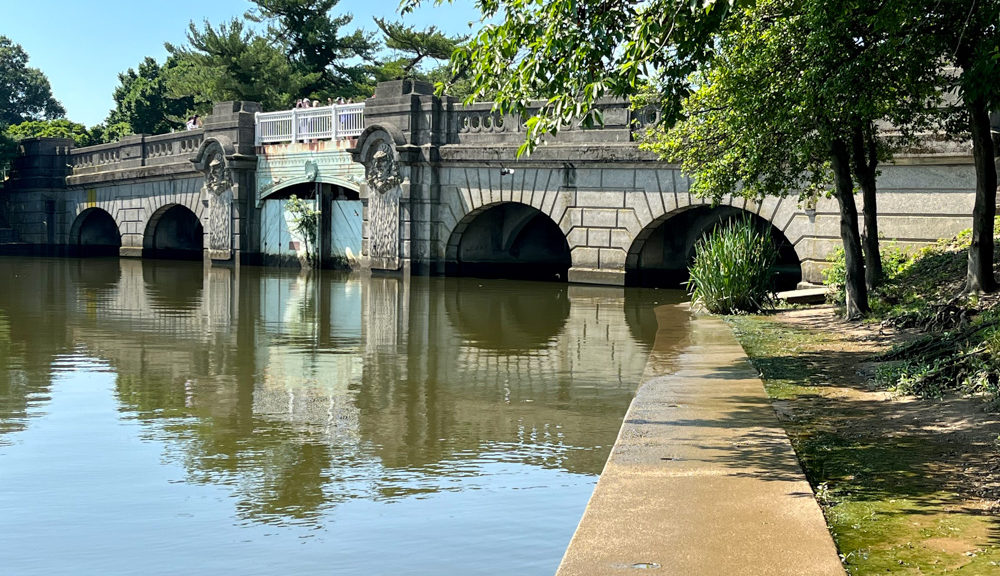
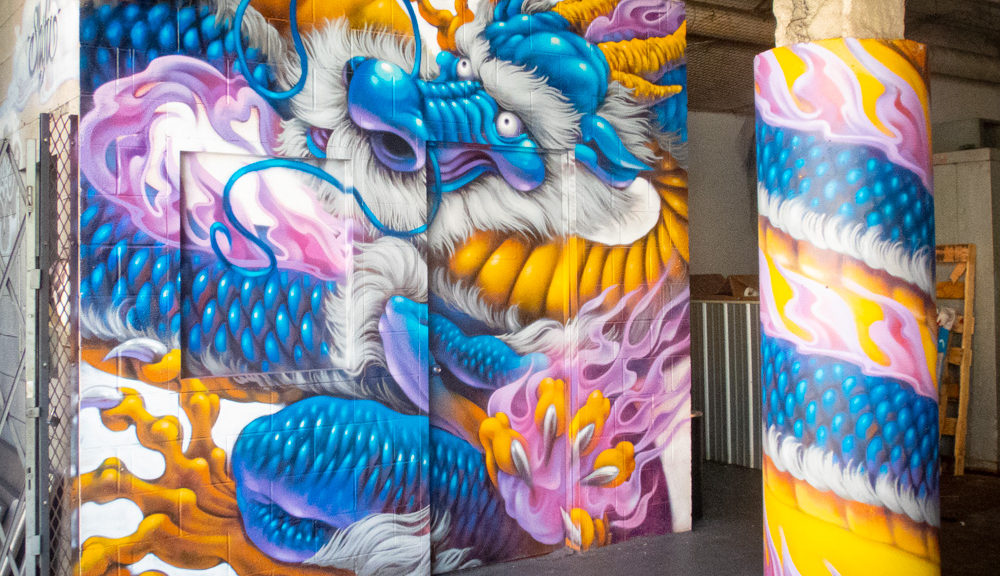
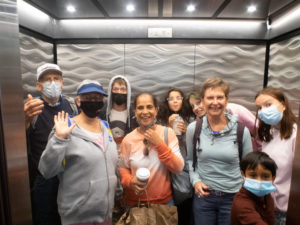 This is the crew we went with: my mom, step-dad, sister-in-law, and her two kids, granddaughter, nephew, and my cousin’s kid. It was a formidable team.
This is the crew we went with: my mom, step-dad, sister-in-law, and her two kids, granddaughter, nephew, and my cousin’s kid. It was a formidable team.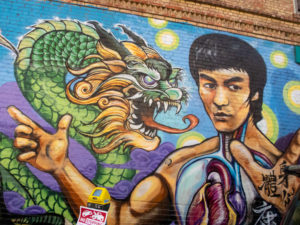
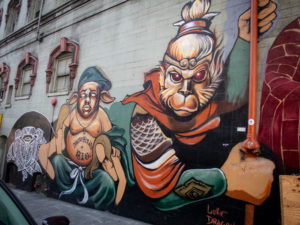
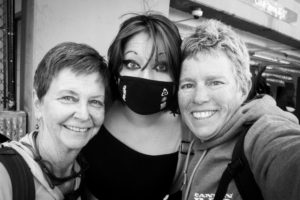 My wife, Ellen, and I with our granddaughter. It was her first trip to see the family in eight years.
My wife, Ellen, and I with our granddaughter. It was her first trip to see the family in eight years.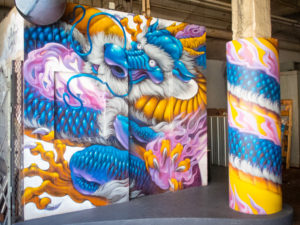 I love wondering unfamiliar cities and finding treasures like this parking garage entrance.
I love wondering unfamiliar cities and finding treasures like this parking garage entrance.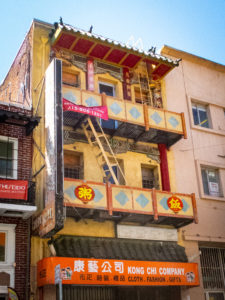
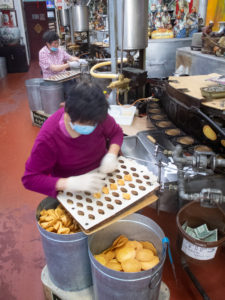 We HAD to stop by the fortune cookie factory!
We HAD to stop by the fortune cookie factory!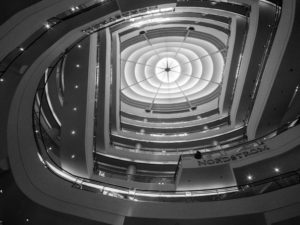
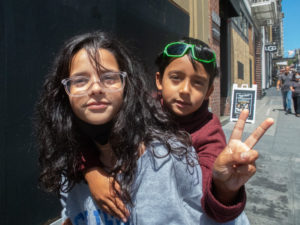 Our two youngest team members were SUCH troopers.
Our two youngest team members were SUCH troopers.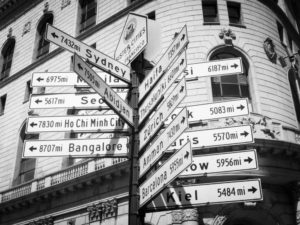 After lunch, we boarded the trolly and headed to Fisherman’s Wharf where we ended the day. From there we walked back to the Ferry Building and headed home.
After lunch, we boarded the trolly and headed to Fisherman’s Wharf where we ended the day. From there we walked back to the Ferry Building and headed home. 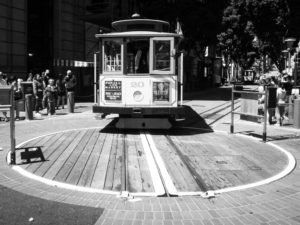
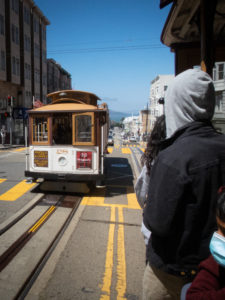

 Such an interesting combination of sign and statue. Like…are you welcoming me to…the end? Yikes!
Such an interesting combination of sign and statue. Like…are you welcoming me to…the end? Yikes!

 Here are some plants and a pet that requires little attention.
Here are some plants and a pet that requires little attention.













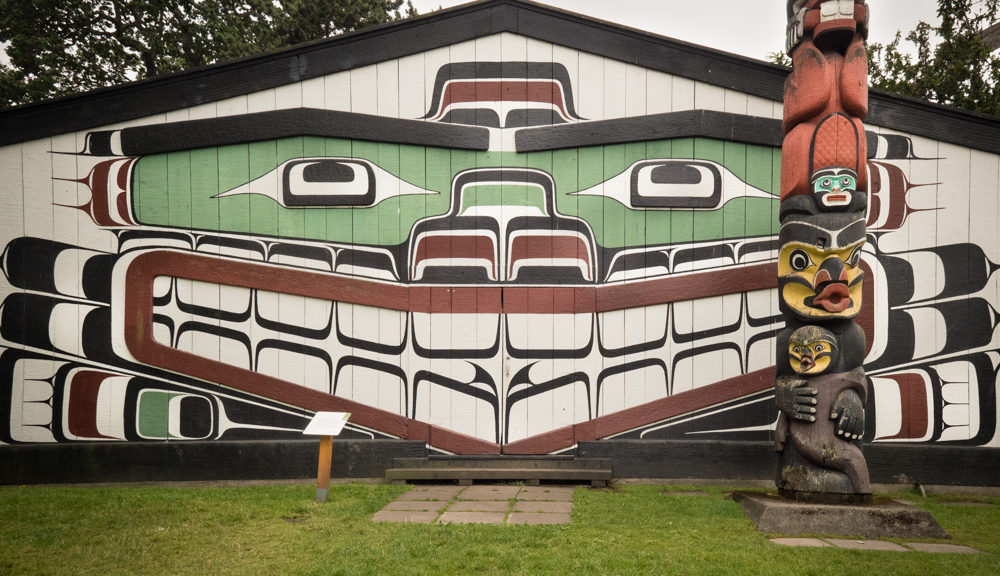
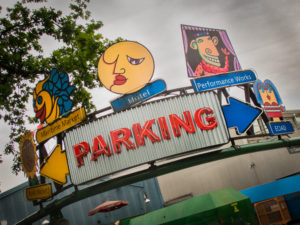
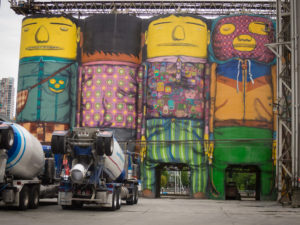
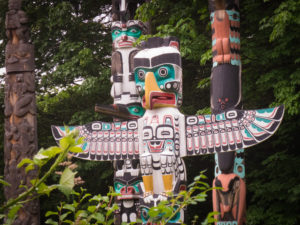
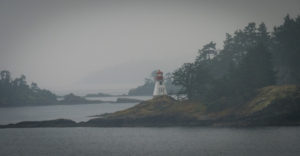
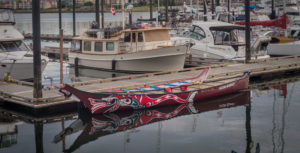 I could shoot boats all day long.
I could shoot boats all day long.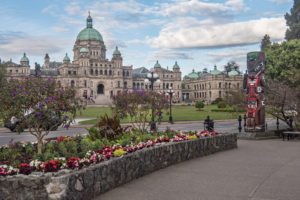 The Parliament Building was amazing.
The Parliament Building was amazing.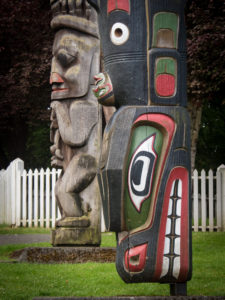
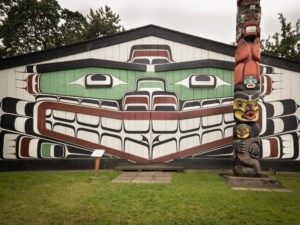
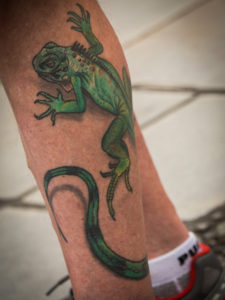
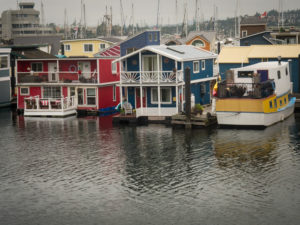
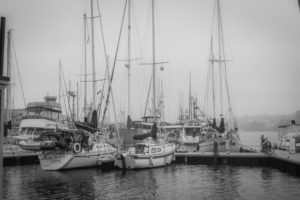
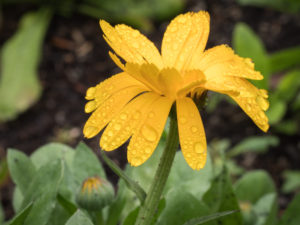
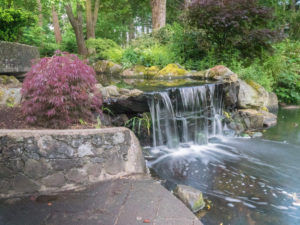
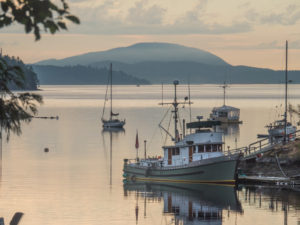
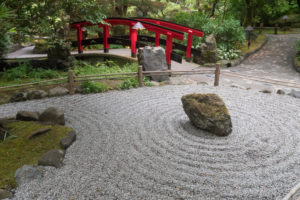
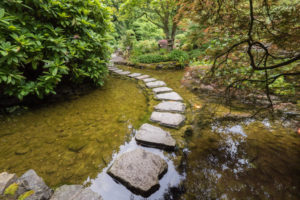
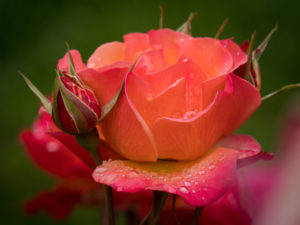
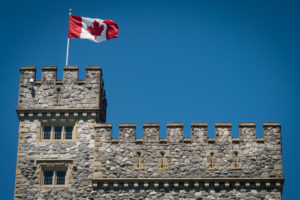
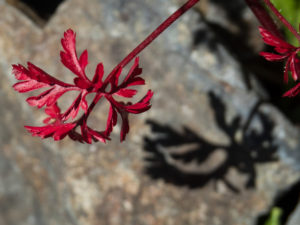
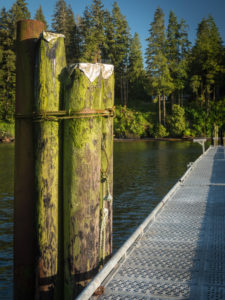
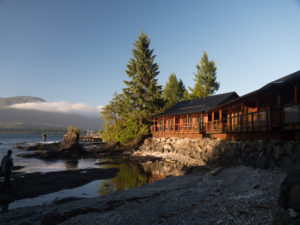 Yes, we stayed n these cabins. Check out the low tide.
Yes, we stayed n these cabins. Check out the low tide.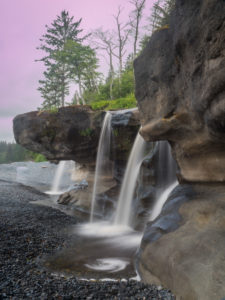
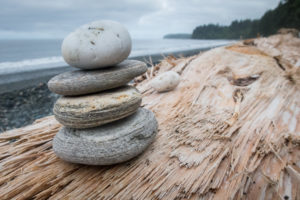
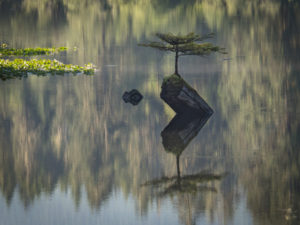
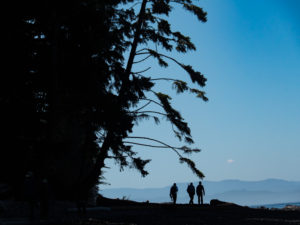
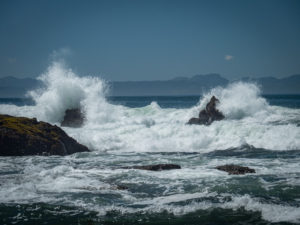
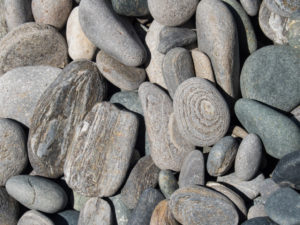
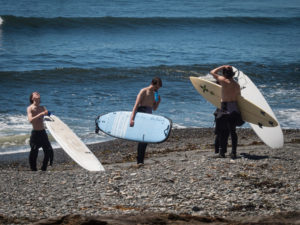
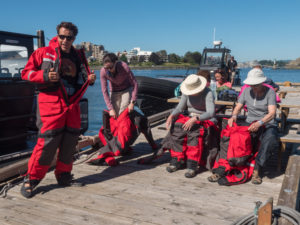 We each had to wear these survival suits. They were really hot but would save our lives should we end up in the ocean.
We each had to wear these survival suits. They were really hot but would save our lives should we end up in the ocean.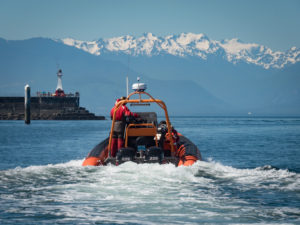
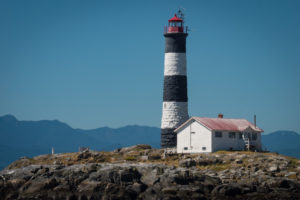
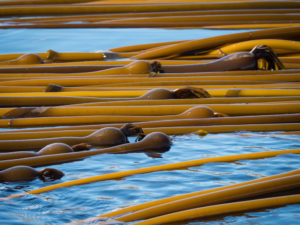
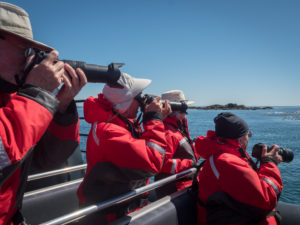
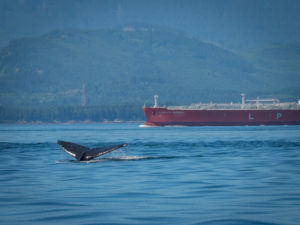 Ocean-going tankers and whale collisions is a real problem.
Ocean-going tankers and whale collisions is a real problem.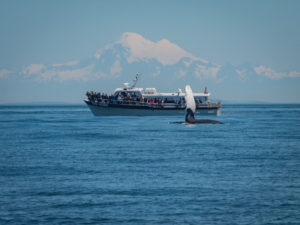 Another tour boat.
Another tour boat.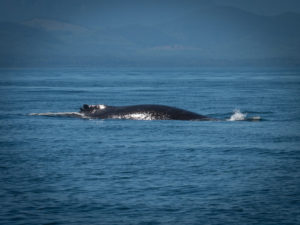
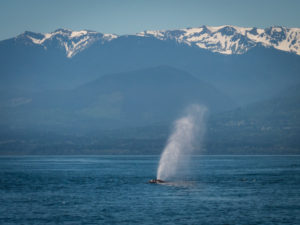
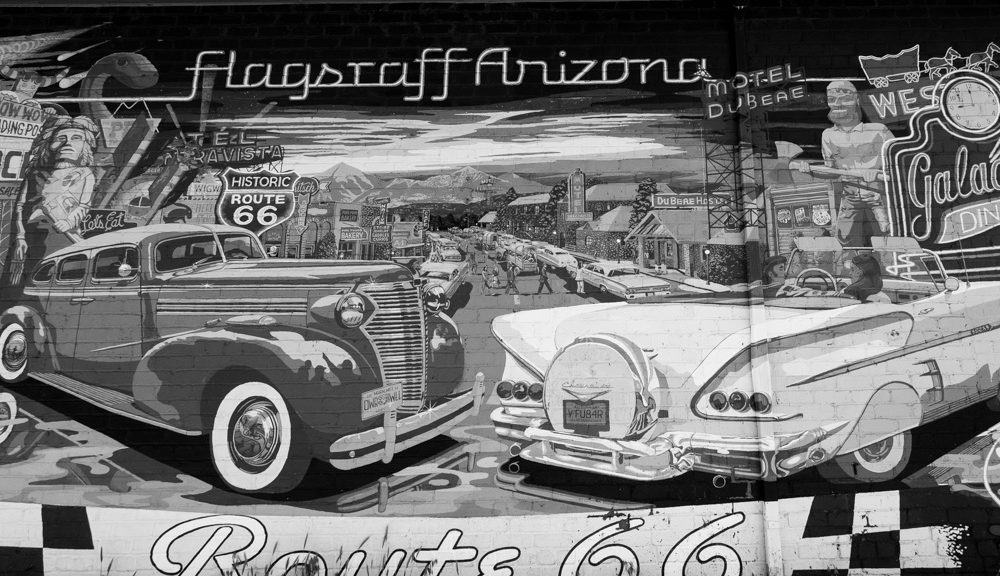
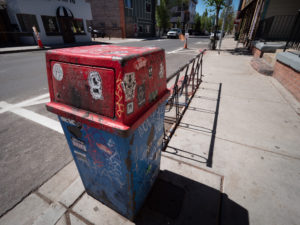
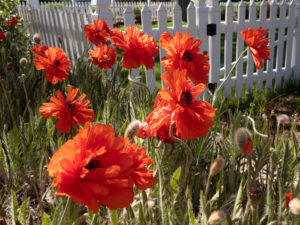
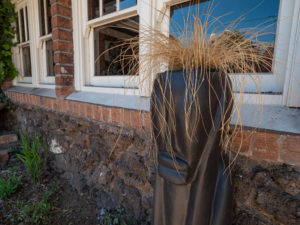
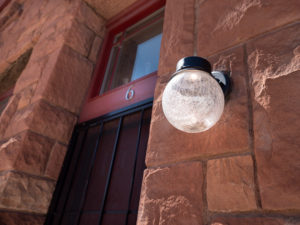 You definitely have to shoot things close to the lens. Things you can walk up to as you don’t have the “reach” of a long lens.
You definitely have to shoot things close to the lens. Things you can walk up to as you don’t have the “reach” of a long lens.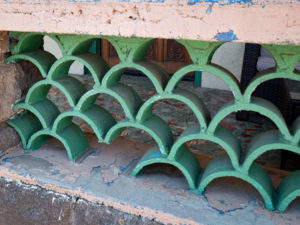
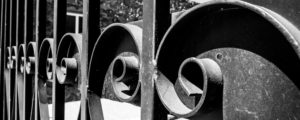
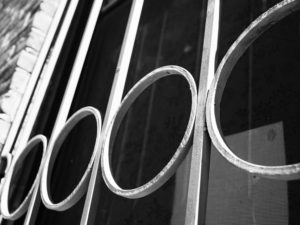
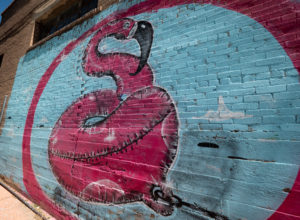 I was only able to capture this Flamingo Snake…? with my UW lens as two cars were parked right in front of it. Had I been using my long lens I would have needed to back way up to get it all in the field of view and it would have had the two cars in the image. Yay for ultra wides!!
I was only able to capture this Flamingo Snake…? with my UW lens as two cars were parked right in front of it. Had I been using my long lens I would have needed to back way up to get it all in the field of view and it would have had the two cars in the image. Yay for ultra wides!!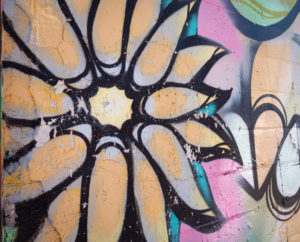 A mural in an alley.
A mural in an alley.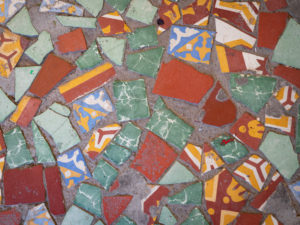 The floor outside a set of apartments on the Southside.
The floor outside a set of apartments on the Southside.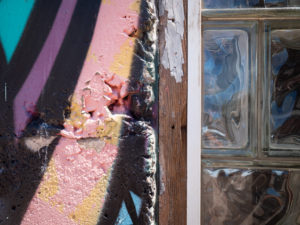 The same alley, where mural meets the window.
The same alley, where mural meets the window.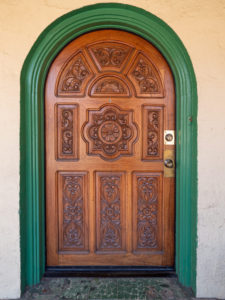 Doors present their own special problem with a UW lens. Shooting them was easy enough but the distortion that comes along with a wide-angle lens often means that in post-processing either the top or bottom of the image is narrower. Luckily this can be fixed in Lightroom under the Transform tab in the Develop module. The Vertical tab evens it out pretty well.
Doors present their own special problem with a UW lens. Shooting them was easy enough but the distortion that comes along with a wide-angle lens often means that in post-processing either the top or bottom of the image is narrower. Luckily this can be fixed in Lightroom under the Transform tab in the Develop module. The Vertical tab evens it out pretty well. 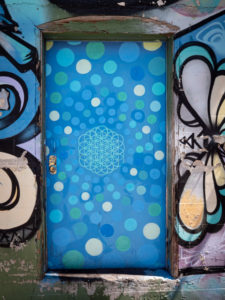
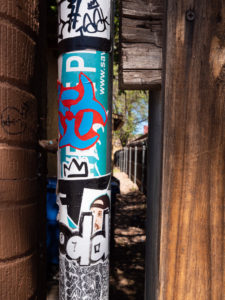 This image is shot with the UW allows for less blur of the background.
This image is shot with the UW allows for less blur of the background.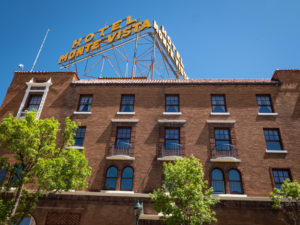 This lens also allowed me to capture an entire side of an old hotel by just standing on the opposite sidewalk. You can see the distortion, though. I straightened the roof of the building in Lightroom but the lower light line on the building that goes through the trees is off-kilter.
This lens also allowed me to capture an entire side of an old hotel by just standing on the opposite sidewalk. You can see the distortion, though. I straightened the roof of the building in Lightroom but the lower light line on the building that goes through the trees is off-kilter.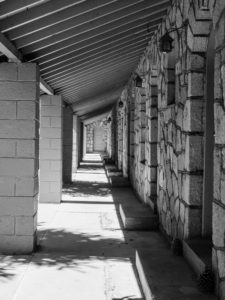 I just liked this shot.
I just liked this shot.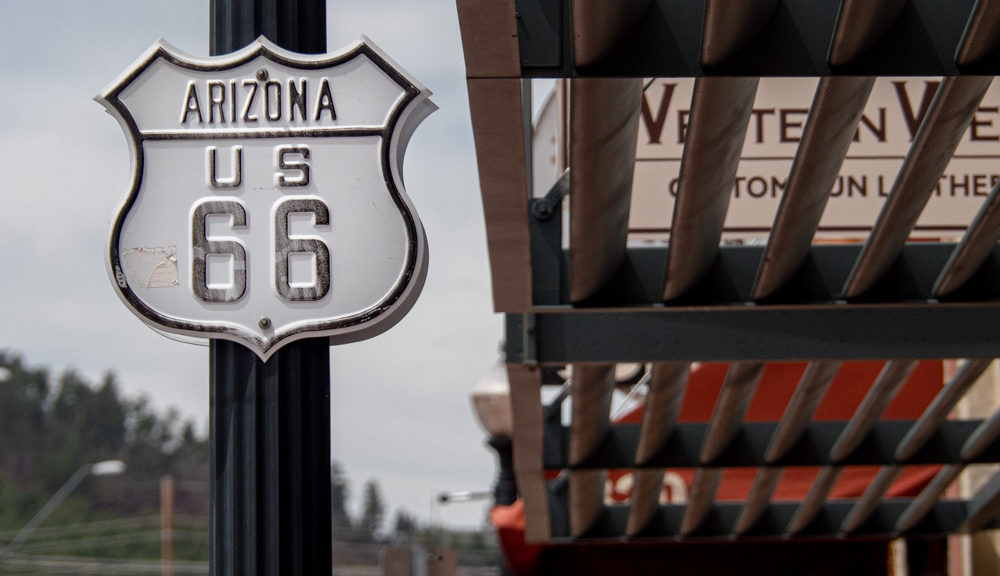
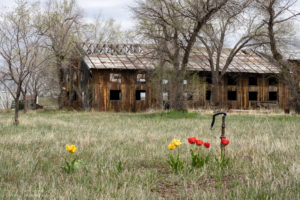
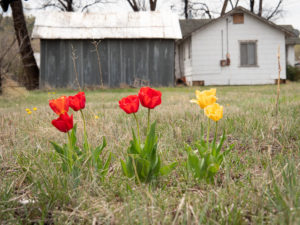
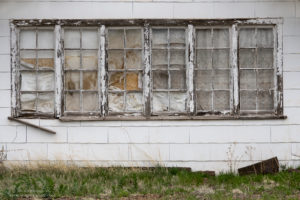
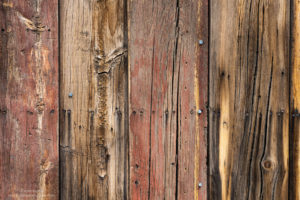
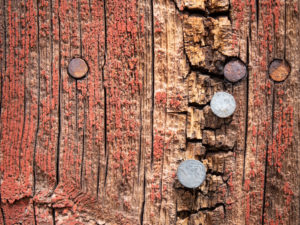
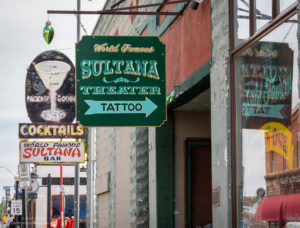
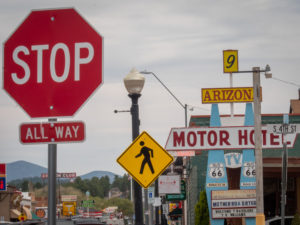
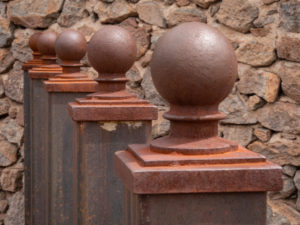
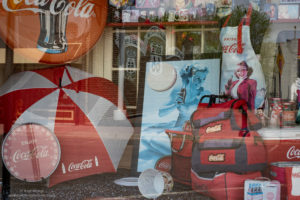
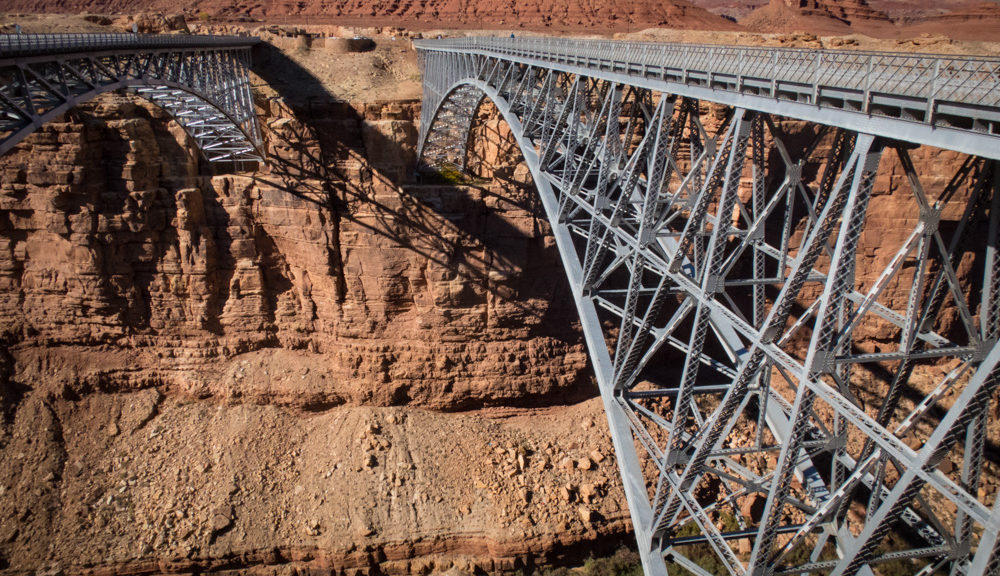
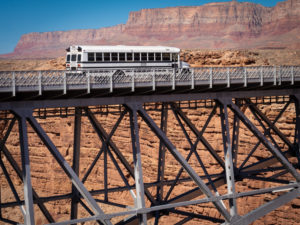 On our river trip, we were dropped off on one end and were encouraged to walk across to the other side, where we were picked up and shuttled to the put-in at Lee’s Ferry.
On our river trip, we were dropped off on one end and were encouraged to walk across to the other side, where we were picked up and shuttled to the put-in at Lee’s Ferry.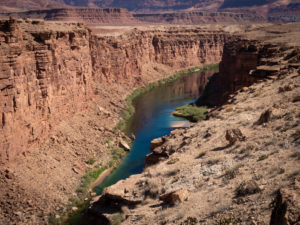 This image is looking upriver toward the ferry which is four miles away.
This image is looking upriver toward the ferry which is four miles away.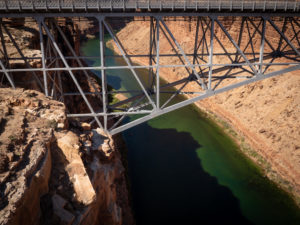 This is looking downstream under the vehicle bridge. It was cool to realize we would be floating on that water in just a couple of hours.
This is looking downstream under the vehicle bridge. It was cool to realize we would be floating on that water in just a couple of hours.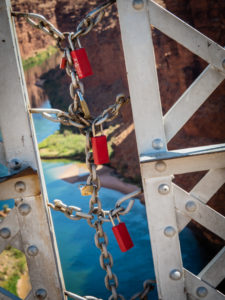
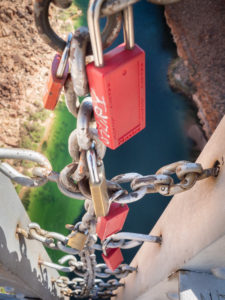
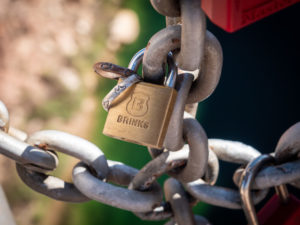
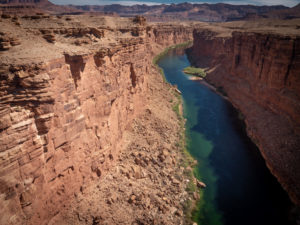 I just don’t get tired of this view.
I just don’t get tired of this view.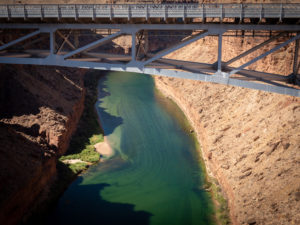 The Colorado is known for the amount of silt it moves. In this image, you can see it suspended in the green water.
The Colorado is known for the amount of silt it moves. In this image, you can see it suspended in the green water.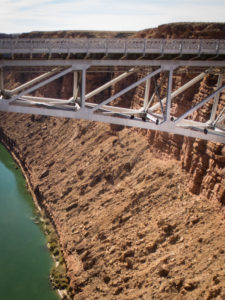 See those black dots on the bridge? Those are California Condors! This image is from a different trip but they do like to hang out under the bridge. I think on this day we saw as many as ten!
See those black dots on the bridge? Those are California Condors! This image is from a different trip but they do like to hang out under the bridge. I think on this day we saw as many as ten!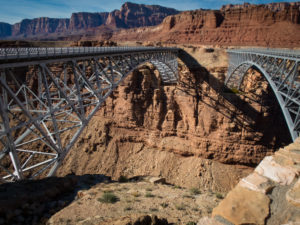 On either end, you can shoot across and capture both bridges in the same images. They look like they are floating.
On either end, you can shoot across and capture both bridges in the same images. They look like they are floating.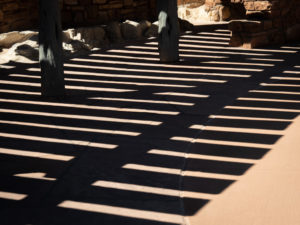 I like shadows. I saw this pattern being made from the ramada roof on the side we walked to.
I like shadows. I saw this pattern being made from the ramada roof on the side we walked to.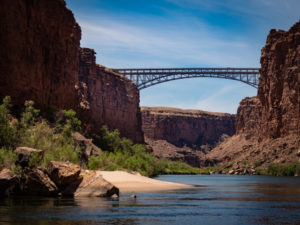 Now we are on the river and fast approaching the bridge. The beaches on this river are stunning…but that’s a blog for a different time.
Now we are on the river and fast approaching the bridge. The beaches on this river are stunning…but that’s a blog for a different time.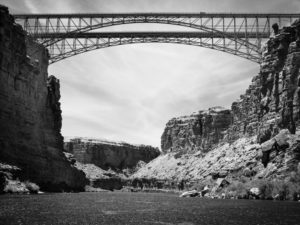 The black and white makes it seem like an older image. Look at the water and how rough it looks. These are the spring winds notorious for this time of year.
The black and white makes it seem like an older image. Look at the water and how rough it looks. These are the spring winds notorious for this time of year.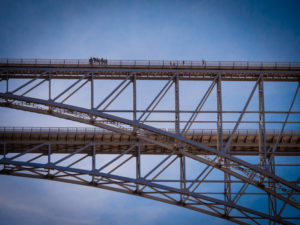 As we passed under I noticed people on the bridge looking at us. I was amazed at how small they were. This is even zoomed all the way in!
As we passed under I noticed people on the bridge looking at us. I was amazed at how small they were. This is even zoomed all the way in!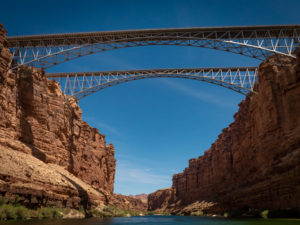 And finally, approaching the bridges and as we float under you can see both bridges from the underside.
And finally, approaching the bridges and as we float under you can see both bridges from the underside.






 The residents of Bisbee were not afraid to use color on their homes.
The residents of Bisbee were not afraid to use color on their homes.
 Random, right? But SO cool! I had to do a double take when I noticed these giant cat eyes peering out at the street below.
Random, right? But SO cool! I had to do a double take when I noticed these giant cat eyes peering out at the street below. Giant insects were a thing. They were on several buildings around town.
Giant insects were a thing. They were on several buildings around town. I love signs. I dig the artistry and design that goes into the more unique ones. I think that’s what draws me to beer and wine labels as well.
I love signs. I dig the artistry and design that goes into the more unique ones. I think that’s what draws me to beer and wine labels as well. It’s always good to know that superheroes are nearby in case one needs their services.
It’s always good to know that superheroes are nearby in case one needs their services.

 Paria Canyon meets the river here and created this riffle. There were other buildings near the put-in that housed the ferry company back in the day. I did not include them here but they are fun to explore and photograph as well.
Paria Canyon meets the river here and created this riffle. There were other buildings near the put-in that housed the ferry company back in the day. I did not include them here but they are fun to explore and photograph as well. We parked the cars for the weekend and took the bikes all over. We road out to Highway 89 and down the road to this dirt road that seemed to go on forever.
We parked the cars for the weekend and took the bikes all over. We road out to Highway 89 and down the road to this dirt road that seemed to go on forever. That’s Navajo Bridge in the background, the only way over the canyon for hundreds of miles. We also had a great view of the river below.
That’s Navajo Bridge in the background, the only way over the canyon for hundreds of miles. We also had a great view of the river below. We ran across this hogan, a traditional Dine’ dwelling, out on a dirt road with the beautiful Vermillion Cliffs in the background.
We ran across this hogan, a traditional Dine’ dwelling, out on a dirt road with the beautiful Vermillion Cliffs in the background. This is just a fun low angle shot I took while out on the bike ride. I had with me my Canon S120 point and shoot because it was easy to slip in and out of my pocket. It is also an easy camera to shoot one handed.
This is just a fun low angle shot I took while out on the bike ride. I had with me my Canon S120 point and shoot because it was easy to slip in and out of my pocket. It is also an easy camera to shoot one handed. I like shadows.
I like shadows. Shooting while riding…NOT recommended.
Shooting while riding…NOT recommended. This is the gate to the local cemetery that tells a very sad story. There are several children buried here that all seemed to pass in the span of a year. Not sure what the illness was but it ravaged this family.
This is the gate to the local cemetery that tells a very sad story. There are several children buried here that all seemed to pass in the span of a year. Not sure what the illness was but it ravaged this family. We parked our bikes at the opening to the Lonely Dell Ranch like they were horses. This property had several buildings and an orchard. It was a great place to shoot.
We parked our bikes at the opening to the Lonely Dell Ranch like they were horses. This property had several buildings and an orchard. It was a great place to shoot.






 This is a section of a structure at the mining park at the entrance to the Jerome State Park in the hills above Cottonwood, AZ. I like how it turned out as a black and white and how the wood beams radiate out from the main beam at the center.
This is a section of a structure at the mining park at the entrance to the Jerome State Park in the hills above Cottonwood, AZ. I like how it turned out as a black and white and how the wood beams radiate out from the main beam at the center. This wall was nicely lit at the state park. Brick adds such character.
This wall was nicely lit at the state park. Brick adds such character. Rusted old signs always intrigue me. I try to imagine what purpose they had for the people they were build for and how they fit into their lives.
Rusted old signs always intrigue me. I try to imagine what purpose they had for the people they were build for and how they fit into their lives. The Hotel Connor, home to the Spirit Room, is a local bar that hosts live music and is a popular motorcycle destination.
The Hotel Connor, home to the Spirit Room, is a local bar that hosts live music and is a popular motorcycle destination. This Mexican food restaurant was closed but I loved the chair backs. I shot this image through the front window.
This Mexican food restaurant was closed but I loved the chair backs. I shot this image through the front window. The winding roads and switchbacks that make up the streets of Jerome have a lot of signs to help with the flow of traffic. You can get from Cottonwood to Prescott via this great little artisan community.
The winding roads and switchbacks that make up the streets of Jerome have a lot of signs to help with the flow of traffic. You can get from Cottonwood to Prescott via this great little artisan community. Speaking of artists, this is the front door of Katie Lee, a long time environmentalist and champion of Glenn Canyon that was swallowed up by Lake Powell when the Glenn Canyon Dam was build in the 1960’s. She passed away in November at the ripe old age of 98. Rest in peace Katie.
Speaking of artists, this is the front door of Katie Lee, a long time environmentalist and champion of Glenn Canyon that was swallowed up by Lake Powell when the Glenn Canyon Dam was build in the 1960’s. She passed away in November at the ripe old age of 98. Rest in peace Katie. This red rocker is on the porch of the Surgeon’s House which was built for the local doctor once upon a time. It has since been turned into a bed and breakfast.
This red rocker is on the porch of the Surgeon’s House which was built for the local doctor once upon a time. It has since been turned into a bed and breakfast. Jerome is nestled on a hillside and stairs are everywhere. Some are more interesting than others. I love how the bottom step on this one appears uneven. Chances are it’s the sidewalk that is tilted, not the stairs.
Jerome is nestled on a hillside and stairs are everywhere. Some are more interesting than others. I love how the bottom step on this one appears uneven. Chances are it’s the sidewalk that is tilted, not the stairs.